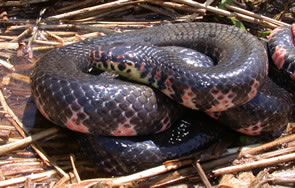
Farancia abacura
Photo
by JD Willson
Description: Mud snakes are large, heavy-bodied snakes with shiny black backs and numerous red bars extending up each side. The belly of this species is checkered red or pink and black. The head is not much wider than the neck, and the scales are smooth. A spine on the tip of the tail is used to subdue slippery prey, primarily large, aquatic salamanders (e.g., sirens and amphiumas).
Activity/Behavior: Mud snakes are most active at night, and because of their secretive nature, are rarely encountered. However, they can sometimes be found crossing roads during rainy weather.
Habitat/Range: Mud snakes are aquatic, living in swamps, marshes, Carolina bays, and slow moving bodies of water. They prefer areas with dense aquatic vegetation.
Reproduction: They breed during the spring, and the females lay between 6–50 eggs during the summer. When the babies hatch, they look similar to the adults, although the red bars are usually brighter in color and may encircle the entire body. Young mud snakes eat small frogs, tadpoles, and aquatic salamanders.
Miscellaneous: When captured, mud snakes do not bite but may lightly stick their captor with their tail spine, which is harmless. In local folklore, the mud snake is sometimes called the “hoop snake” and is said to take its tail in the mouth and roll downhill. Of course, mud snakes do not have this ability.
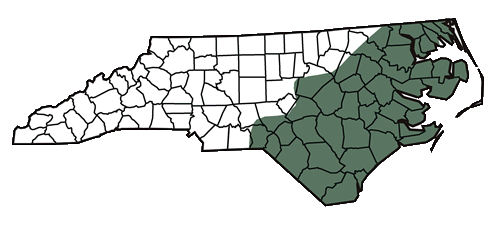
The shaded region represents the range of the mud snake in North Carolina.
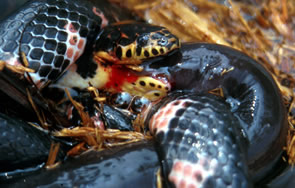
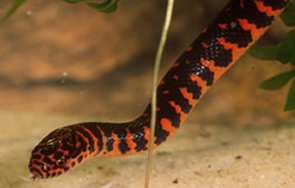
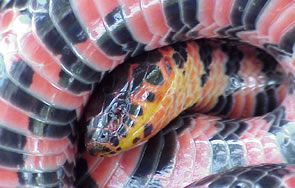
Photo by Cameron Young
A juvenile mud snake.
Photo
by RW Van Devender
Photo by Jeff Hall
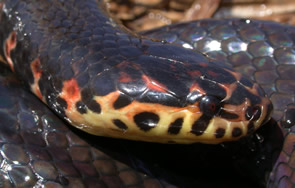
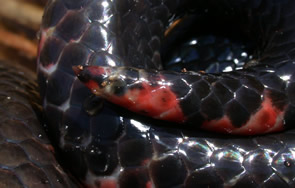
Photo by JD Willson
This website created by: J. Willson, Y. Kornilev, W. Anderson, G. Connette and E. Eskew.
For comments or questions contact M. Dorcas: midorcas@davidson.edu.
M. Dorcas homepage: http://bio.davidson.edu/dorcas
Davidson College, Davidson, North Carolina 28035-1719.
Text and maps from: Dorcas, M. E. 2004. A Guide to the Snakes of North Carolina. Davidson College - Herpetology Laboratory, Davidson, NC. – Copyright by Michael E. Dorcas.
Partial Funding for this website provided by a Associate Colleges of the South, National Science Foundation, and Duke Energy.
